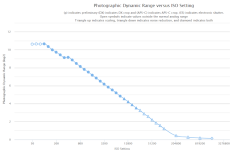You will need to experiment to find the real light level and the real depth of field. What distance are you shooting from? Did you calculate the DOF for that distance and aperture?
If the bird is still shooting with the lowest shutter speed appropriate for the distance and bird size will allow dropping ISO so you can retain as much Dynamic range as possible.
Shooting with stabilization off when the subject is still and will often result in sharper images, and using a sturdy tripod. Any shutter shorter then 1/500 is defeating the purpose of stabilization, same with a tripod mounting.
Remember, on modern ISOless sensors you have a wider range of ISO options before noise becomes a problem, but still, dynamic range drops roughly 1 stop per 1 stop of ISO increase. These cameras are spec'd at ridiculously poor Signal to noise ratios you would never print.
Even a modest 800 ISO you lose 3 full stops of DR, or 3 stops higher noise density. You can slow shutter 3 stops or more if your subject is still or moves within the depth of field. Side to side movement on the same plane will not have DOF problems, however, so motion blur is all you have to worry about shooting wide open and the widest aperture.
Here is the PDR chart for the D500 in raw just to give you an idea of how narrow a range of ISO you should limit yourself to. If the bird is in shadows, your ISO choice becomes more important. If you do much post processing on these images you will have a lot more data to work with if you stay below 800ISO, the lower the better for files that are printed large or have much processing to be done. Overall, I think the addition of a tripod that is sturdy enough is going to result in much better images, at a lower speed and lower ISO. If you are shooting into backlighting where the bird is in shadows but the area behind it bright, it will be harder to expose the shadows with low noise unless you let the background blow out and spot meter the bird. One way of dealing with that case is used a remote wireless flash. Then you can really lower the shutter speed and fully freeze and movement at the same time. Flash is so short of duration most animals are not spooked by it. In fact, babies, dogs, birds, and horses don't even seem to notice the 1/30,000 of a second flash duration provided you do not use preflash modes like the Optical CLS Nikon remote TTL flash control. Use RF controllers, they do not emit the preflash.


